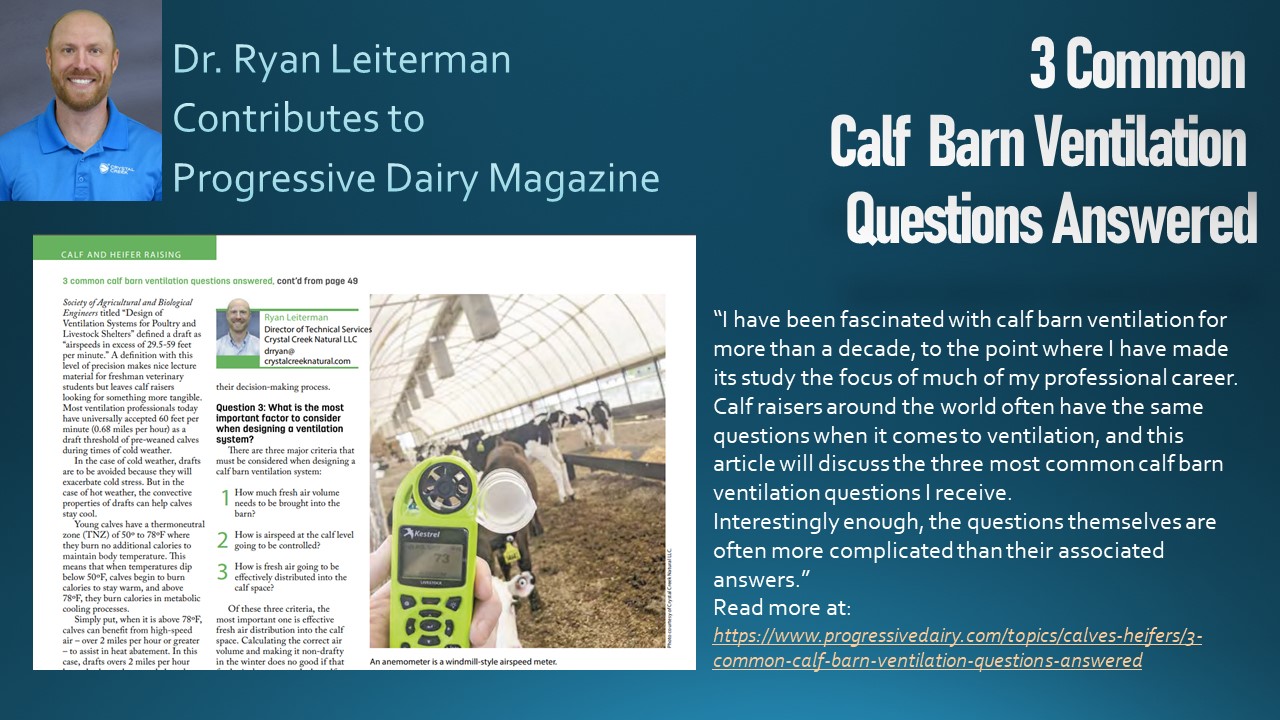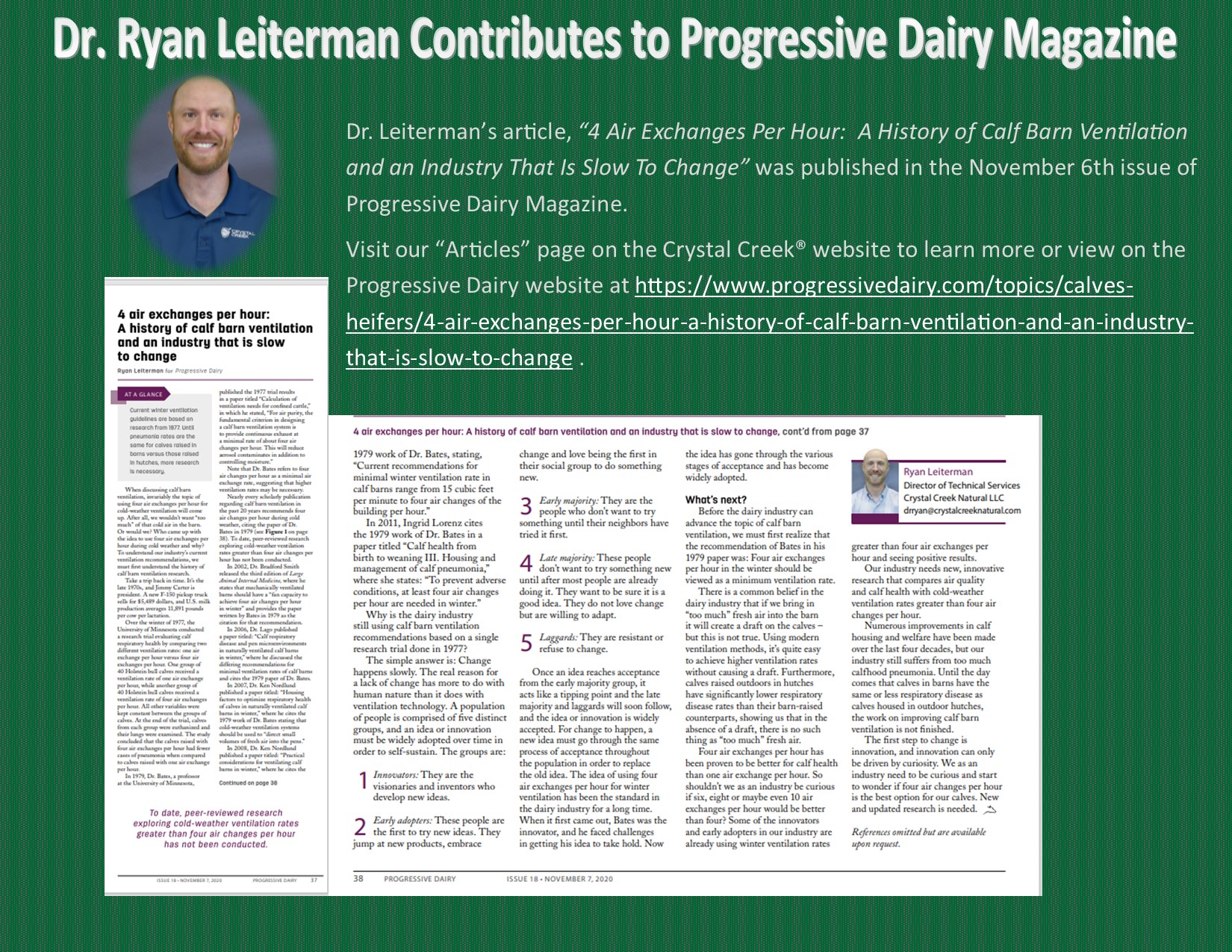3 Common Calf Barn Ventilation Questions Answered
Click here to view as a pdf: 3 Common Calf Barn Ventilation Questions Answered
 By Ryan Leiterman, D.V.M
By Ryan Leiterman, D.V.M
Director of Technical Services
I have been fascinated with calf barn ventilation for more than a decade; to the point where I have made its study the focus of much of my professional career. Calf raisers around the world often have the same questions when it comes to ventilation and this article will discuss the three most common calf barn ventilation questions I receive. Interestingly enough, the questions themselves are often more complicated than their associated answers.



 By Ryan Leiterman, D.V.M.
By Ryan Leiterman, D.V.M.

